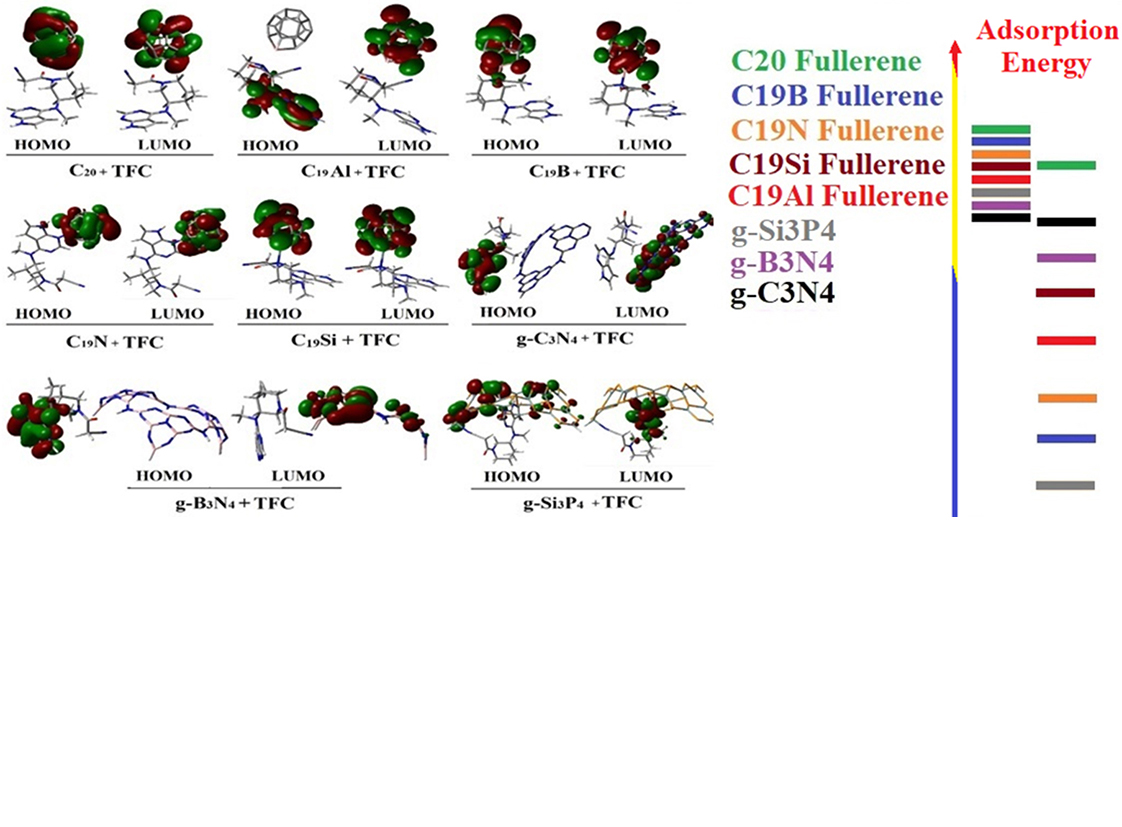A theoretical approach to the possibility of applying the C<sub>19</sub>Al, C<sub>19</sub>B, C<sub>19</sub>N, C<sub>19</sub>Si, and C<sub>20</sub> fullerene as well as the g-B<sub>3</sub>N<sub>4</sub>, g-C<sub>3</sub>N<sub>4</sub>, and g-Si<sub>3</sub>P<sub>4</sub> nanosheets as carriers for drug delivery (and sensors for detection of the residue) of the Janus kinase inhibitor tofacitinib
Keywords:
C19X, fullerenes, g-X3Y4, tofacitinib, DFT, drug delivery, nanosheets, semiconductor sensorAbstract
The probability of using eight types of nanostructures containing graphitic carbonitride-like (g-X3Y4) derivatives and C19X fullerenes as semiconductor sensors for the detection of tofacitinib (TFC) residues has been studied using density functional theory approach. The possibility of applying these nanosheets and nanosized segments for delivery of TFC has been investigated. The results indicate that, among all considered sorbents, the most unsuitable carriers for delivery of TFC are C20 fullerene due to its thermodynamically unstable adsorption complex and g-Si3P4 nanosheet due to its irreversible adsorption of the drug. The most suitable carrier for TFC is g-C3N4 due to its medium Eads and relatively low toxicity against healthy tissues. Among all studied nanostructures, the best semiconductors for the detection of TFC residues are g-Si3P4 and g-C3N4 nanosheets and C19Si fullerene, while the most unsuitable is the pristine C20 fullerene due to its weakest electronic pulse.

